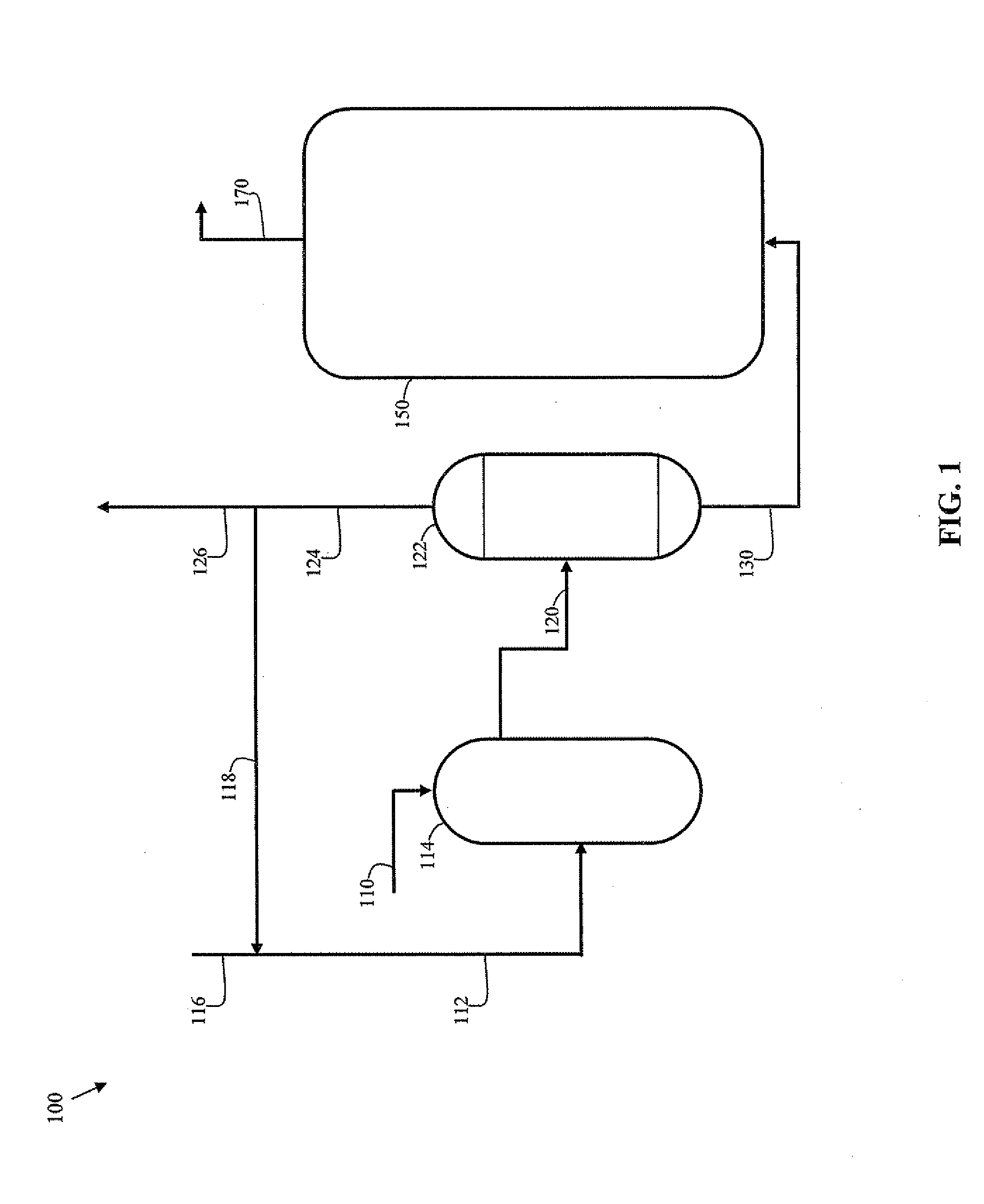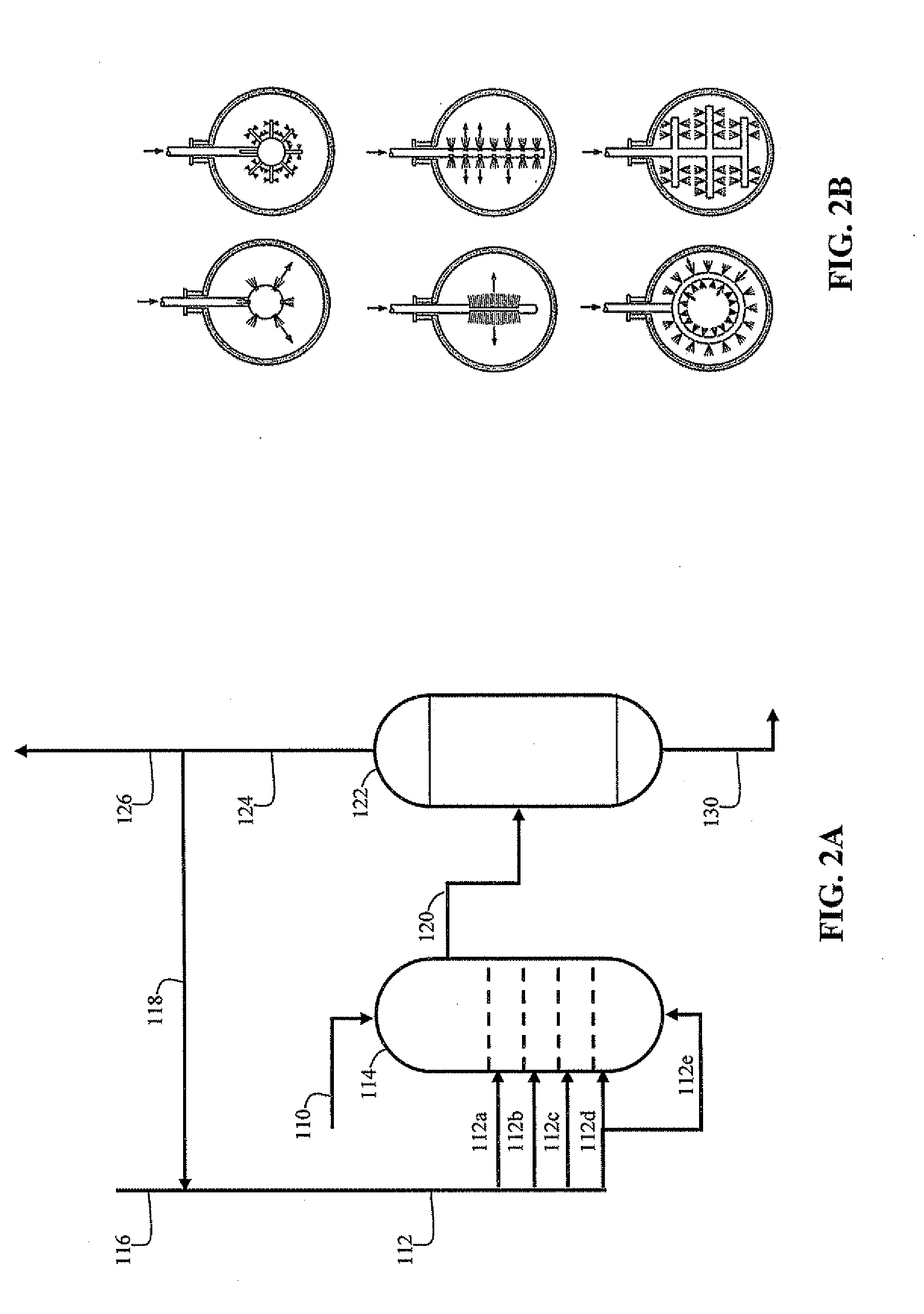Hydrogen-enriched feedstock for fluidized catalytic cracking process
a technology of fluidized catalytic cracking and hydrocarbon feedstock, which is applied in the cracking process, hydrocarbon oil cracking, petroleum industry, etc., can solve the problems of severe catalyst coking, inefficient catalyst utilization, and inability to fully convert reactants, so as to reduce the amount of nitrogen-containing hydrocarbon fuel and increase the efficacy of the conventional fcc process
- Summary
- Abstract
- Description
- Claims
- Application Information
AI Technical Summary
Benefits of technology
Problems solved by technology
Method used
Image
Examples
Embodiment Construction
[0036]An improved FCC process is disclosed that includes mixing an excess of gaseous hydrogen with the feedstock prior to introducing it into the FCC reactor. In particular, a mixing zone is integrated so that hydrogen is dissolved in the feedstock, and the liquid and the remaining hydrogen gas mixture is passed to a flashing zone to separate gases from the feedstock containing dissolved hydrogen. The recovered hydrogen is recycled to the mixing zone. The liquid containing dissolved hydrogen is mixed with the cracking catalyst and introduced into the FCC reactor. Thus, a substantially single-phase (i.e., liquid) reaction occurs, in contrast to conventional hydrogen enrichment approaches that include a significant gaseous hydrogen phase and results in stripping of light reaction products.
[0037]For the purpose of this simplified schematic illustrations and description, the numerous valves, pumps, temperature sensors, electronic controllers and the like that are customarily employed in...
PUM
| Property | Measurement | Unit |
|---|---|---|
| pressure | aaaaa | aaaaa |
| temperatures | aaaaa | aaaaa |
| temperature | aaaaa | aaaaa |
Abstract
Description
Claims
Application Information
 Login to View More
Login to View More - R&D
- Intellectual Property
- Life Sciences
- Materials
- Tech Scout
- Unparalleled Data Quality
- Higher Quality Content
- 60% Fewer Hallucinations
Browse by: Latest US Patents, China's latest patents, Technical Efficacy Thesaurus, Application Domain, Technology Topic, Popular Technical Reports.
© 2025 PatSnap. All rights reserved.Legal|Privacy policy|Modern Slavery Act Transparency Statement|Sitemap|About US| Contact US: help@patsnap.com



